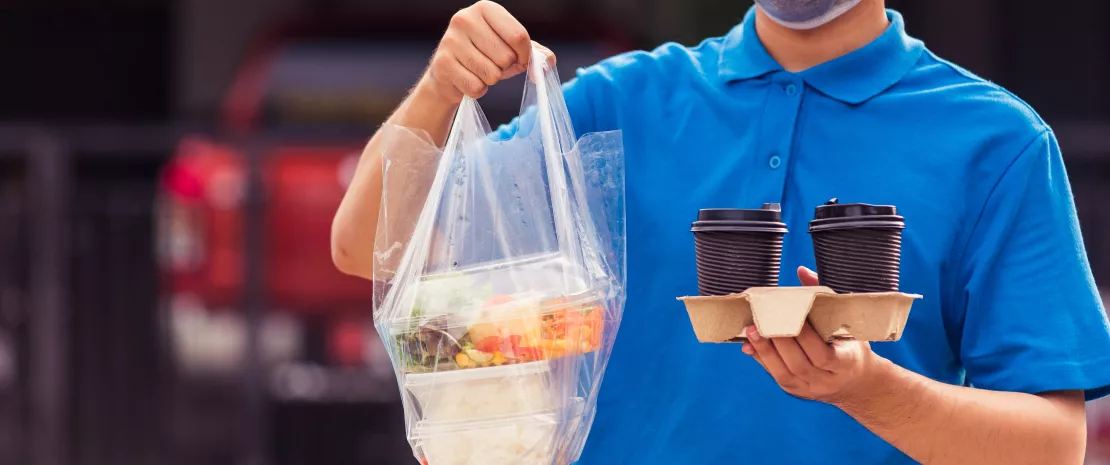Microplastics: beware of takeaway food packaging and their impact on the microbiota!
A study by Chinese researchers suggests that plastic particles from takeaway food packaging may alter the gut and oral microbiota.
- Learn all about microbiota
- Microbiota and related conditions
- Act on your microbiota
- Publications
- About the Institute
Healthcare professionals section
Find here your dedicated section
Sources
This article is based on scientific information

About this article
Only half an hour to eat? Think twice before grabbing fried noodles at your local snack bar... especially if they come in plastic packaging. According to a recent study, the microplastics and nanoplastics in these disposable containers may disrupt your gut and oral microbiota.1
Microplastics and nanoplastics are everywhere!
Resistant, light, cheap... plastic has many advantages. However, plastic can degrade, generating tiny particles that disperse through the air and water, into animals’ bodies, and ultimately into our own bodies via our plates. Microplastics measure less than 5 mm and can be found throughout the body, including in the lungs, placenta, and blood. On the other hand, nanoplastics are not well studied, since they measure less than 100 nm (500 times less than the thickness of a human hair) and are more difficult to detect. Although little is known about their effects on humans, they are still a cause for concern. Not only can they cross the body’s biological barriers, but the additives they contain, considered chemical pollutants, may promote illnesses such as cancer and some forms of inflammatory bowel disease (IBD).2,3
Microbiota imbalance: plastic in the dock
We know that takeaway food packaging releases significant amounts of small plastic particles. Tests on animals fed with these micro- and nanoplastics show an adverse impact on the animals’ gut microbiota. But how do they affect human health?
To answer this question, researchers enrolled 390 Chinese students aged between 18 and 30 and put them into three groups: heavy consumers of takeaway food in plastic packaging (at least three times per week), occasional consumers (maximum once per week), and non-consumers. They collected stool and saliva samples in order to analyze and compare their oral and gut microbiota.
Significant impact on balance of gut and oral flora
The results show that consumers of takeaway food in plastic containers suffer more gut disorders and cough than those who never consume such food. More worryingly, they show significant alterations ( (sidenote: Dysbiosis Generally defined as an alteration in the composition and function of the microbiota caused by a combination of environmental and individual-specific factors. Levy M, Kolodziejczyk AA, Thaiss CA, et al. Dysbiosis and the immune system. Nat Rev Immunol. 2017;17(4):219-232. ) ) in their gut and oral microbiota. These have specific bacterial signatures, such as higher quantities of Collinsella in their stools and higher quantities of Thiobacillus (previously found in rice fields polluted by plastic) in their mouths.
Opening simple plastic package is far from harmless
A study by Australian researchers4 has shown that cutting, tearing, twisting, or simply handling a piece of adhesive tape, a chocolate wrapper, or a shopping bag may release potentially toxic microplastics. The study has shown that, depending on the type of the packaging and the opening technique, between 0.46 and 250 microplastic particles are released for every centimeter cut, torn, or twisted.
Particles able to pass between body compartments?
The authors suggest that coughing, which was more frequent in the takeaway food eaters, may result from micro- and nanoplastics that migrate from the gut to the lungs, where they accumulate in the airway microbiota, leading to dysbiosis.
These results have yet to be confirmed, but in the meantime, consider preparing your own snacks and, above all, carry them in a (more stable) glass container.












